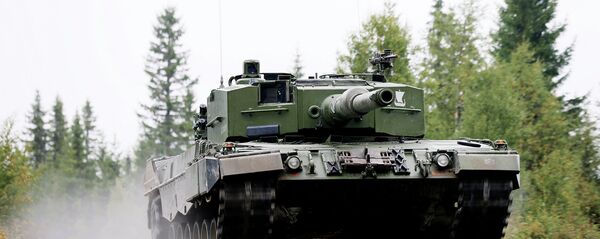The Russian Navy previously participated in exercises near China, but it is the first time China is taking part in exercises in the Baltic Sea, which was hardly good news for the Nordic countries.
Previously, the Chinese vessels were greeted and accompanied by Norwegian and Danish warships to their destination in Russia. Klaus Thing Rasmussen, senior duty officer at the military operations center, informed that Denmark escorted the Chinese vessels the entire way through Danish territorial waters, Danish Radio reported.
Patruljeskibet Najaden følger de kinesiske fartøjer. Der er tale om en fregat, et forsyningsskib og en destroyer, som ses her. #dkforsvar pic.twitter.com/zg4JACOqAt
— Forsvaret (@forsvaretdk) 18 июля 2017 г.
According to associate professor Liselotte Odgaard, researcher in Chinese military and diplomacy at the Defense Academy, China sent some of its most advanced military equipment for practice in Danish waters, which should be first and foremost seen as a political signal.
"There is a strong signal value. They show off and indicate that they are standing with Russia. China and Russia have close cooperation when it comes to pushing the Western alliance back into their neighborhood," Liselotte Odgaard told Danish Radio.
"It must be seen in light of the increased tensions in the Baltic. The Russians have installed missiles in Kaliningrad aimed at Europe, and NATO has sent troops to the Baltic countries. The Chinese hereby show that they stand together with Russia to respond to what they perceive as Western dominance in their neighborhood," Liselotte Odgaard said.
Nevertheless, Odgaard somewhat inconsistently ensured there is no reason to be concerned about the exercise, since China was already present in Denmark and the rest of the West.
"Today, all major powers are present everywhere, and China is massively present in terms of investment and infrastructure. It is not like during the Cold War, where there was a geographical division of the world," Odgaard said, adding that Denmark should avoid "unnecessary threats" to Russia.
According to research director Fredrik Westerlund from Sweden's Total Defense Research Institute (FOI), China's participation was primarily a security policy signal to "superpowers like the UK, France and the US."
"There are no real reasons for China to build up military capacity in the Baltic Sea. It is more about politics than the specific military ability to work in the Baltic Sea," Fredrik Westerlund told Swedish national broadcaster SVT.
Apart from China's debut in the Baltic, the Nordic nations were appalled at the very thought of Russian submarines lurking in their territorial waters, despite the fact that all ships have the right to free passage in accordance with the UN's Convention on the Law of the Sea.
With about a dozen warships and a dozen aircraft participating, the Russian-Chinese exercise is relatively limited when compared to the big NATO exercise Baltops held in June. Not only did Baltops gather about fifty ships and fifty aircraft from NATO members and their partners, but it also featured US B-52 strategic bombers in the Baltic Sea area for the first time, Swedish national broadcaster SVT reported.






